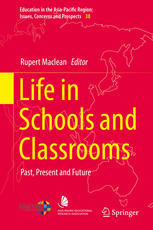

Most ebook files are in PDF format, so you can easily read them using various software such as Foxit Reader or directly on the Google Chrome browser.
Some ebook files are released by publishers in other formats such as .awz, .mobi, .epub, .fb2, etc. You may need to install specific software to read these formats on mobile/PC, such as Calibre.
Please read the tutorial at this link: https://ebookbell.com/faq
We offer FREE conversion to the popular formats you request; however, this may take some time. Therefore, right after payment, please email us, and we will try to provide the service as quickly as possible.
For some exceptional file formats or broken links (if any), please refrain from opening any disputes. Instead, email us first, and we will try to assist within a maximum of 6 hours.
EbookBell Team

5.0
30 reviewsThis book discusses key aspects of life in schools and classrooms, and surveys the changes that have occurred over the years in educational research, policy making and practice in these school and classroom settings. It not only examines cutting-edge research in these areas, but also showcases good practices in the field. Among the topics reviewed are recent developments in assessment, methods for collecting and analysing data on classroom practice, school leadership and the pros and cons of class size and small-class teaching; topics which are currently hotly debated in education systems around the globe. As such, the book objectively examines the various debates, and surveys the full range of evidence available. Education researchers, policy makers and practitioners often hold differing views about the reasons for teacher and student behaviour in classrooms and, for example, its relevance to class size. Many of these views are based on ‘gut feelings’ rather than hard evidence. Unfortunately, these three groups, with differing perspectives, often ‘talk past each other’ rather than engage in a productive, mutually beneficial dialogue. The book builds an effective bridge between researchers, policy makers and practitioners regarding the impact of these various aspects of classroom life, so that the viewpoints of each can be carefully considered and evaluated.